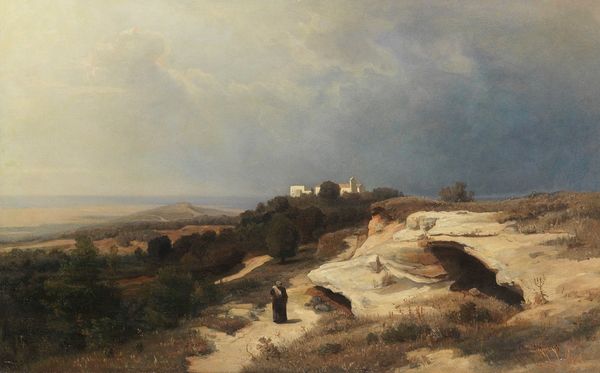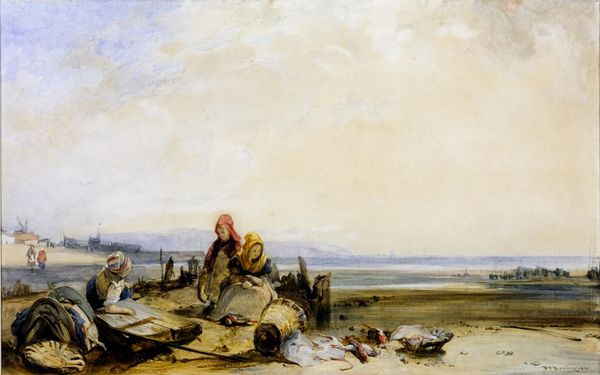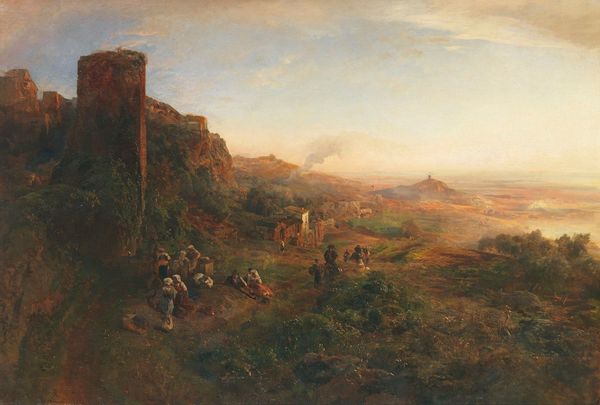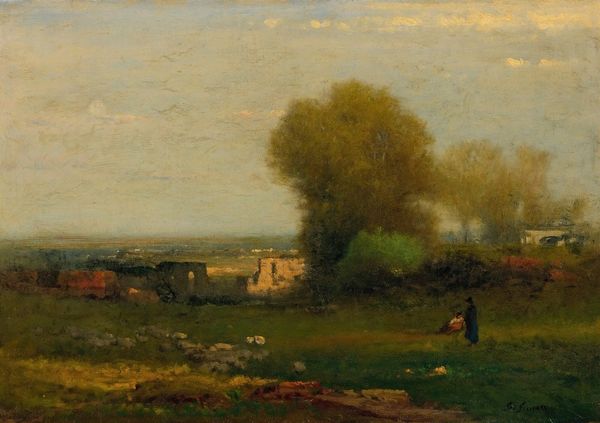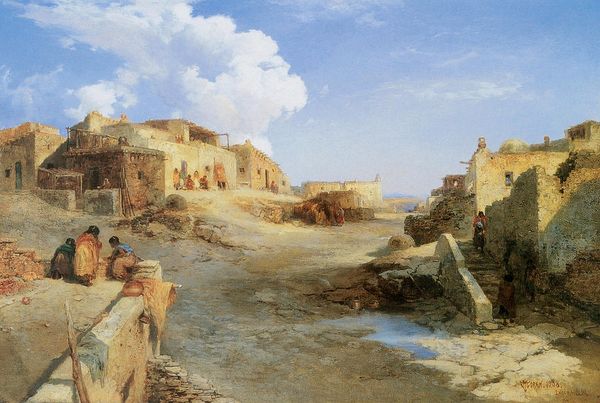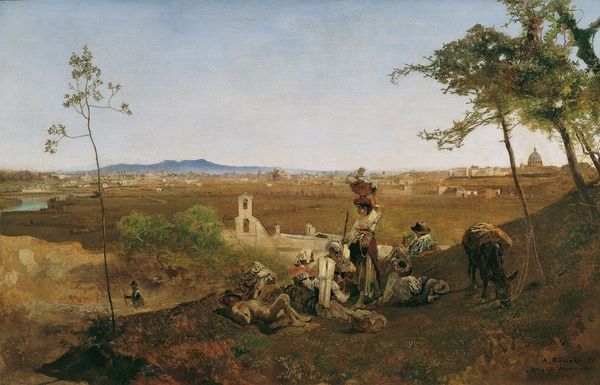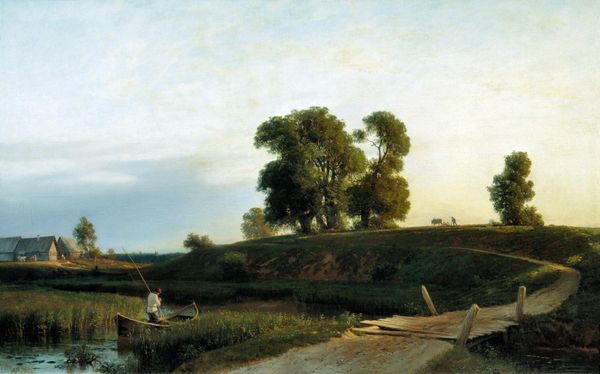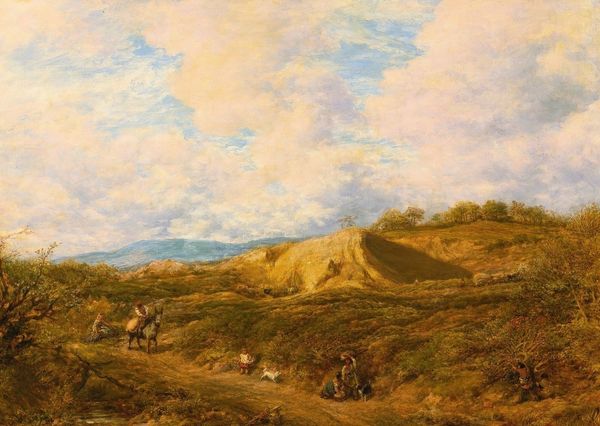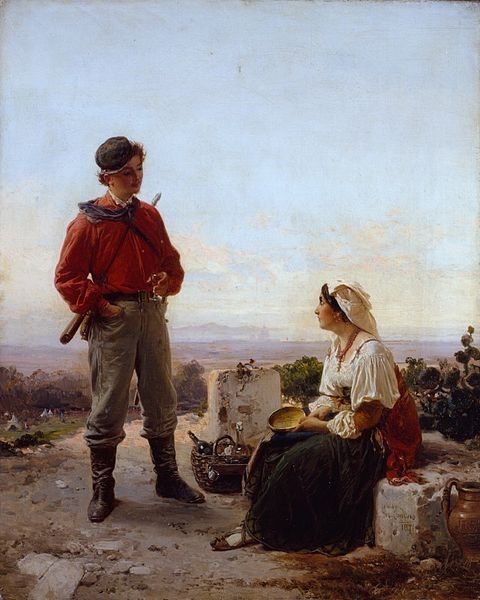
Copyright: Public domain
Curator: What strikes me most about this composition is how it portrays the calm before, perhaps, the storm. The vast landscape creates a sense of anticipation, with Garibaldi seeming to contemplate the impending events. Editor: It is Gerolamo Induno's 1862 painting "Garibaldi at Sant'Angelo (Capua)." An oil painting of the famous Italian general set during a key moment in the unification of Italy. The composition really encapsulates a sense of duty and patriotic resolve. Curator: Absolutely. Induno seems to intentionally place Garibaldi in a godlike position—his back is turned as he contemplates the valley below. Is he thinking about a specific place or is this a symbolic representation of all that he had seen on his journey? His red shirt pops in stark contrast to the calming sky, symbolizing blood and conflict, but perhaps it suggests the fervor of passion, too? Editor: Garibaldi’s red shirt has always functioned as a symbol of revolt. It underscores the performative aspects of patriotism—choosing to adopt working-class garb as a show of solidarity while on military campaign. In some ways it creates an illusion—as though a single "man of the people" were the driving force for national unity when we know it was much more complex than that. Curator: That's a great point. It prompts the viewer to reflect on the man versus the legend. We can almost divine his next step—this representation, after all, seeks to solidify Garibaldi’s iconic status in the national psyche, no? I am very curious what semiotic system informs his sword; he seems ever ready. Editor: It really does suggest a romanticised, heroic vision, one that can potentially mask the socio-political undercurrents of the time. By centering this single heroic figure, other stories become subdued: those of the ordinary soldiers, the dissenting voices. How does the heroic scale impact contemporary engagement? Curator: A very good point. However, it also functions to immortalize his image, associating Garibaldi with not only the unification movement, but also the picturesque countryside: He and Italy become inseparable symbols of freedom. Editor: Exactly. We can decode that symbolic representation further by remembering that in this moment of national unity there was also regional tensions, and the figure of Garibaldi sought to unite a heterogeneous, multifarious population. Thank you. Curator: Indeed, the work layers national narratives into the collective conscious through both literal imagery and implication. It was my pleasure.
Comments
No comments
Be the first to comment and join the conversation on the ultimate creative platform.

